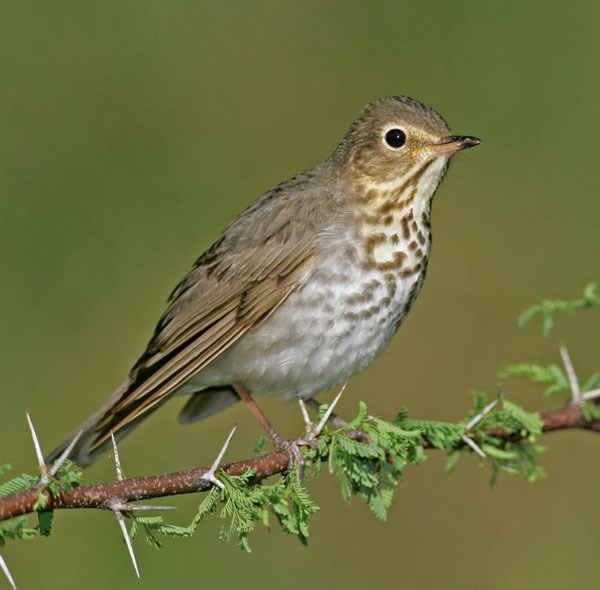By May 15 we await only four more species for the full complement of our summer visitors, these last arrivals being willow flycatcher, red-eyed vireo, black swift and common nighthawk. All are insectivores dependent upon a reliable supply of insects, which should be guaranteed by the warm temperatures of late May.
As I write this, I can hear a Swainson’s thrush giving its call note, a distinctive, soft “weep,” in my garden on Redrooffs Road. Swainson’s thrush is one of the commonest of summer birds on the Sunshine Coast and is present in huge numbers, certainly in the tens of thousands. Ironically, it is rarely seen as it is a cryptically coloured brownish bird that skulks in the understory of our low- and mid-elevation woodlands and is always reluctant to show itself. I have done bird surveys during the dawn chorus in early June and it is quite amazing the number of these birds that are present. Even casual listeners sitting on their deck in the evening can be aware of Swainson’s singing or calling all around them. Swainson’s thrushes begin to arrive in early May (the first report this year was on May 5) with a general arrival after about the 12th. For the first week or so we only hear their call note. Then, as the bulk of birds arrive from Mexico, they find a mate, establish breeding territories, and sing their beautiful, plaintive song, which is definitively “the sound of summer on the Sunshine Coast.” The song, an upward spiraling series of fluty notes, is very distinctive and not likely to be confused with any other low-elevation bird in our area. The birds will sing from mid-May to early July, after which they go silent.
While Swainson’s thrush, with its cryptic colouration, is rarely seen, two of our gaudiest species are now present and often catch the eye of even casual observers. Western tanagers are slightly smaller than a robin and the males are a gaudy mix of black, white, yellow and orange (females are a dull green). They are tree dwellers but not afraid to show off their colours. They are abundant in low-elevation mixed forest and their call note “pit-er-ik” is commonly heard. Black-headed grosbeaks are black, white and burnt gold and are often noticed when they visit feeders. The male birds have a beautiful, liquid song and despite being prolific singers can be very hard to find from their cover in the leaves of deciduous trees.
Enjoy the colour and music of our summering birds for the next two months as this is but a brief interlude in the great cycle of life and know that “the leaves that are green turn to brown.” Question or reports can be addressed to [email protected] or 885-5539. Good Birding!



